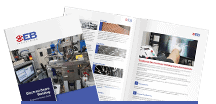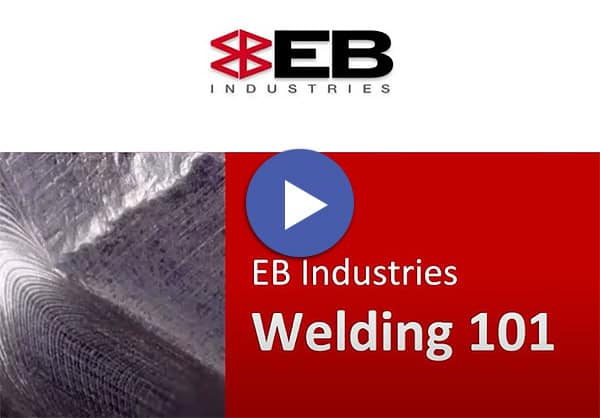The semiconductor industry is built on precision, where even the smallest imperfections can compromise device performance. Welding plays a crucial role in the assembly of semiconductor components, ensuring reliable electrical connections, robust structural integrity, and hermetic sealing. Advanced welding techniques, particularly electron beam welding (EBW), laser welding (LBW) and laser hermetic sealing (LHS), have become indispensable for semiconductor manufacturing, enabling the production of high-performance microelectronics and power devices.
The Demands of Semiconductor Welding
Semiconductor components, such as sensors, cooling plates, microchip enclosures, and wafer processing equipment, require welding methods that deliver:
- Minimal heat-affected zones (HAZ) to protect delicate electronic structures.
- High precision for micro-scale joints.
- Clean, contamination-free welds to maintain semiconductor purity.
- Capability of welding dissimilar materials like copper and stainless steel.
- Hermetic sealing to protect sensitive electronics from environmental factors.
Traditional welding methods like TIG and MIG fail to meet these stringent demands, making electron beam, laser welding and laser hermetic sealing the preferred choices.
Electron Beam Welding for Semiconductor Components
Electron beam welding (EBW) is a vacuum-based process that uses a highly focused beam of electrons to create deep, high-strength welds. This method is ideal for semiconductor applications that demand exceptional precision and purity.
Key Advantages of EBW in Semiconductor Manufacturing:
- Ultra-clean welds: The vacuum environment eliminates impurities like oxides and nitrides.
- High strength and reliability: EB welds retain up to 95% of the parent material’s strength.
- Deep penetration: Capable of welding up to 2 inches in depth, making it suitable for thicker components.
- Superior accuracy: CNC-controlled EB welders ensure consistent and repeatable welds, even on intricate semiconductor assemblies.
- Welding dissimilar metals: EBW enables seamless joining of dissimilar metals such as copper and stainless steel that are difficult to weld with conventional methods.
 |
GuideElectron Beam Welding Essentials Guide |
EBW is commonly used in fabricating sensors, valves, cooling plates for wafer processing, and microchip printing equipment. However, its requirement for a vacuum chamber can limit part size and production speed.
Laser Welding: Precision Without a Vacuum
For semiconductor applications requiring flexibility and speed, laser welding offers a powerful alternative. Unlike EBW, laser welding does not require a vacuum, making it a more efficient option for certain semiconductor assemblies.
Key Advantages of Laser Welding in Semiconductor Manufacturing:
- Rapid processing: Laser welding operates at speeds up to 200 inches per minute, enabling high-volume production.
- Minimal heat input: Pulsed laser welding keeps heat exposure low, protecting sensitive electronics.
- Micro-scale precision: The narrow laser beam allows for fine welds on thin films, sensor diaphragms, and circuit board components.
- No vacuum chamber required: Faster setup and production cycles compared to EBW.
Laser welding is widely used for hermetic sealing of semiconductor packages, ensuring airtight protection against moisture and contaminants. The ability to weld microelectronics and precision sensor assemblies makes it essential technology for modern semiconductor manufacturing. In some instances, the laser welding is performed inside of an inert environment controlled glovebox using a gas mixture specified by the customer.
Choosing the Right Welding Method for Semiconductor Applications
Both EBW and LBW offer unique advantages for semiconductor manufacturing. The choice between them depends on the specific application:
| Factor | Electron Beam Welding (EBW) | Laser Welding |
|---|---|---|
| Weld Depth | Up to 2 inches | Up to 0.25 inches |
| Heat Affected Zone (HAZ) | Minimal (due to vacuum) | Minimal (especially with pulsed lasers) |
| Material Compatibility | Excellent for refractory and dissimilar metals | Suitable for thin materials and delicate components |
| Production Speed | Slower (due to vacuum chamber requirements) | Faster (no vacuum required) |
| Part Size Restrictions | Limited by vacuum chamber size | No size restrictions |
For deep penetration welds and superior material purity, EBW is the best choice. For speed, flexibility, and micro-scale precision, laser welding excels.
 |
WebinarWelding 101 Precision Welding Tips for Electron Beam, Laser Welding and Laser Hermetic Sealing |
EB Industries: Semiconductor Welding Expertise
EB Industries specializes in high-precision welding solutions for the semiconductor industry, offering both electron beam and laser welding services. Our state-of-the-art equipment and rigorous quality standards ensure high-reliability welds for critical semiconductor applications.
Why Choose EB Industries?
- Extensive semiconductor experience—Long history of welding components for wafer processing, microchip printing, and precision sensor assemblies.
- Advanced capabilities—5-axis CNC-controlled welders for repeatable, high-precision welds.
- Industry approvals—Trusted by major semiconductor manufacturers including Applied Materials and ASML.
- Strict quality standards—Certified to AS9100, ISO 9001 and NADCAP for mission-critical applications.
Looking for High-Precision Welding Solutions?
If you need reliable, high-purity welding for semiconductor manufacturing, EB Industries has the expertise and technology to meet your requirements. Contact us today to discuss your project!

